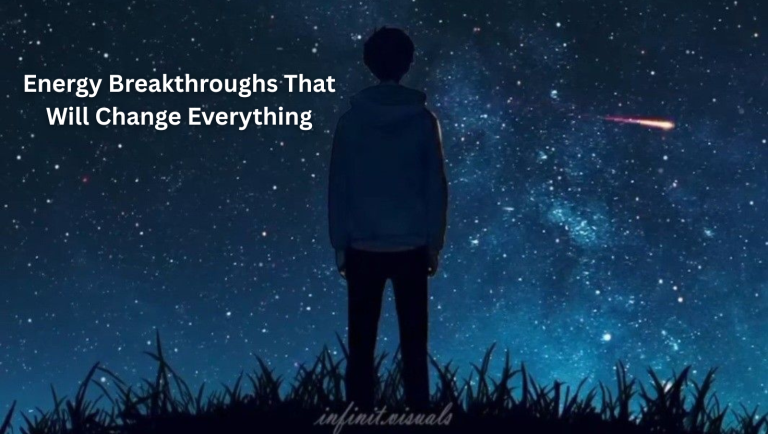omanreport is excited to reveal the most mind-blowing updates in the world of energy — and how they are going to reshape your life sooner than you think. We are entering a time when innovation is moving faster than ever, transforming the way we power our homes, cities, and even our bodies. From clean energy revolutions to futuristic tech that sounds like science fiction, these breakthroughs are not just promises anymore — they are happening right now.
The New Age of Renewable Power
Solar Energy Like Never Before
Solar power has been the poster child of renewable energy for decades, but we are now seeing innovations that make it more efficient and affordable than ever. Scientists have developed perovskite solar cells that can convert sunlight to energy at efficiency levels once thought impossible. Even better, they’re cheap to produce and can be printed on flexible surfaces. This means solar panels could soon be everywhere — on windows, cars, and even clothes.
Wind Energy Reinvented
Wind turbines are getting smarter, bigger, and quieter. Floating offshore wind farms are now being deployed, allowing us to harvest wind energy in places we couldn’t reach before. These turbines are connected to AI systems that predict wind patterns in real time, reducing downtime and increasing output.
Revolutionary Storage Solutions
Next-Generation Batteries
One of the biggest challenges for renewable energy has always been storage. But solid-state batteries are about to fix that. These batteries are safer, charge faster, and last much longer than traditional lithium-ion batteries. The first commercial models are already being tested in electric vehicles, which means you could soon charge your car in minutes instead of hours.
Hydrogen Storage
Hydrogen is often called the fuel of the future, and new ways to store and transport it safely are making that future closer. Researchers have discovered metal hydrides that can absorb hydrogen at low pressure, allowing for compact storage that can be used in cars, planes, and even power plants.
The Rise of Smart Grids
AI-Driven Power Distribution
Smart grids are like the internet of electricity. They use artificial intelligence to monitor power usage in real time and automatically reroute energy to where it’s needed most. This reduces waste, prevents blackouts, and allows households with solar panels to sell excess power back to the grid seamlessly.
Microgrids and Energy Independence
Communities around the world are experimenting with microgrids, which are small, self-sufficient energy networks. These systems are powered by solar, wind, or even bio-energy and can operate independently from the main grid. This is especially helpful in disaster-prone areas where power outages are common.
Energy from Unexpected Sources
Space-Based Solar Power
Imagine capturing solar energy in space, where the sun never sets, and beaming it down to Earth. Space agencies and private companies are now seriously working on this idea. If successful, this could provide near-unlimited clean energy and end our dependence on fossil fuels.
Waste-to-Energy Innovations
Trash may soon become treasure. Advanced incineration plants and biogas facilities can turn everyday waste into usable energy with minimal emissions. Some cities are already running public transport systems on energy made from food scraps and sewage.
The Future of Transportation Energy
Electric Aviation
Airplanes are some of the biggest polluters, but new electric and hybrid planes are aiming to make air travel greener. Companies are building small electric aircraft that could be used for regional flights and urban air taxis, reducing both emissions and noise pollution.
Hyperloop and Magnetic Trains
Transportation is also being redefined with ultra-fast trains powered by magnetic levitation and electric propulsion. These systems use minimal energy and could make cross-country travel faster than airplanes — with zero emissions.
Fusion: The Holy Grail of Energy
What is Nuclear Fusion?
Unlike nuclear fission, which splits atoms, fusion fuses them together — just like the sun does. This process releases enormous amounts of energy without the long-term radioactive waste associated with nuclear power.
Major Breakthroughs
Recent experiments have achieved net energy gain, meaning they produced more energy than they consumed — a milestone scientists have been chasing for decades. If scaled up, fusion reactors could provide almost limitless energy with virtually no carbon emissions.
The Role of Policy and Business
Government Initiatives
Governments are ramping up their investments in clean energy. Tax incentives, subsidies, and climate action plans are driving adoption faster than ever. Some countries have even set deadlines to completely phase out fossil fuels in the coming decades.
Corporate Energy Responsibility
Big tech companies are leading the charge by committing to run their data centers on 100% renewable energy. Even oil and gas giants are investing billions into green technology to secure their future in a post-carbon world.
How You Can Be Part of the Energy Revolution
Small Changes with Big Impact
Switching to LED lights, installing a smart thermostat, or simply unplugging devices when not in use can significantly cut your energy footprint.
Investing in Green Tech
Green investments are booming. From solar startups to electric vehicle companies, putting your money in the right place can support innovation while growing your wealth.
FAQs
What is the most promising new energy technology?
Fusion energy is considered the most promising because it offers nearly limitless power with minimal environmental impact once it becomes commercially viable.
How soon will we see these breakthroughs in everyday life?
Some technologies, like advanced solar and better batteries, are already here. Fusion and space-based solar power may take another decade or two to be fully commercialized.
Can these new energy solutions replace fossil fuels completely?
Yes, but it will take time. A mix of solar, wind, fusion, and smart grids will gradually phase out fossil fuels over the next few decades.
Are these technologies affordable for regular people?
As production scales up, prices drop dramatically. Solar panels and electric cars, for example, are already much cheaper than they were just five years ago.
Conclusion
The world is on the edge of an energy revolution, and perujournal.com is here to make sure you don’t miss a single update. These breakthroughs will not only reduce pollution but also change how we live, work, and travel. From fusion reactors to AI-powered smart grids, the future of energy is cleaner, smarter, and more exciting than ever. The question isn’t whether this revolution will happen — it’s whether you’re ready to be a part of it.


